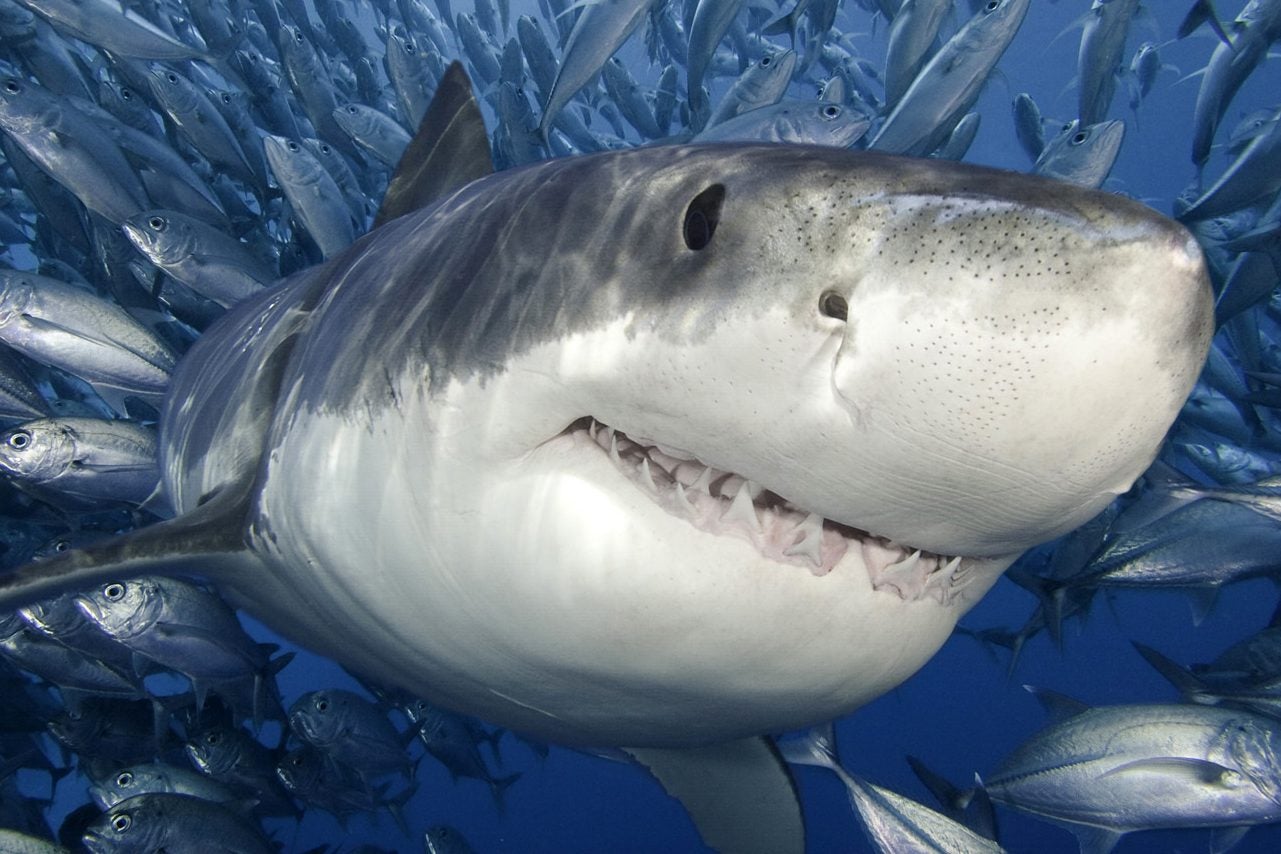In honor of Shark Week on The Discovery Channel, The College is highlighting previous research by professor Gavin Naylor, campus shark expert. Please visit his incredible website, sharksrays,org, to learn more about the anatomy of sharks and rays, and read the article below, which was first published in the fall 2013 issue of the College of Charleston Magazine.
Gavin Naylor told his protégé to give up. The biology professor conceded that Chenhong Li’s efforts had been valiant, his methods innovative and his ideas potentially groundbreaking, but, alas, a year of experimentation was not yielding results. “Move on,” he said, “you’re looking for a needle in a haystack.”
Fortunately, Li ignored him.
“He’s stubborn,” Naylor says of Li, who worked as a postdoctoral scholar in Naylor’s lab at the Hollings Marine Laboratory, “but also very persuasive and has unusually good instinct.”
In short order, Li walked into Naylor’s office and announced that he had found the proverbial needle.
From that day forward, biologists seeking to understand differences across similar species could capture and isolate organisms’ genes much more effectively and then better analyze and compare their genomes. For Li and Naylor specifically, Li’s breakthrough meant they could much more efficiently study the difference in the genomes of assorted sharks and rays.

(L-R): Callie Crawford (graduate student), Carly Shambo (undergraduate student), Professor Gavin Naylor, Shannon Corrigan (post-doctorate fellow)
As Naylor explains, at certain points in time, species diverge, causing similar organisms to develop different traits – such as a saltwater fish developing the ability to live in freshwater. Naylor wants to discover what genes are responsible for the development of these kinds of traits.
“We just really want to understand how life becomes diverse,” says Naylor, adding that different organisms will sometimes use different genetic methods to achieve what seems, by other methods of observation, to be the same adaptive function. “We use genes to understand the roadmap of the diversity of life.”
To further the effort, Naylor and his research team are building an anatomical database of sharks and rays, which will possibly enable them to link these differences in anatomical structures among species to certain genes.
The work requires marine biology graduate student Callie Crawford to bring various smelly fish over to the Medical University of South Carolina, where she runs CT scans consisting of 2,000 X-rays, all stacked together. Back in the lab, Crawford processes these scans – a 25-hour undertaking that makes the skeletons easier to see and interpret.
One day in July, Crawford was processing the scan of an angel shark while her Australian postdoctoral scholar colleague Shannon Corrigan worked with data regarding populations of Mako sharks. Naylor looked on cheerfully, regarding the skeleton of the angel shark with wonder. Viewing the shark’s interlocking bones, Naylor saw a marvel of engineering.
But, even more marvelous than this skeleton, he says, is that nature frequently takes an “end product,” such as this very able angel shark, and continues to change it drastically. Humans cannot engineer such radical changes. The best-designed vacuum cleaner, for example, cannot be tweaked to suddenly become a toaster. “But,” says Naylor, “life can take a vacuum cleaner and make a toaster.”
And life does this through genes, which – thanks to Li and Naylor – are more accessible than ever.





